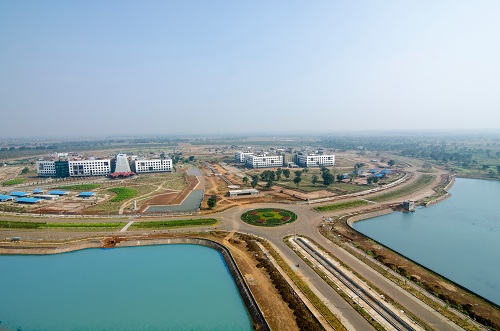The history of India is a story of cities, the rise and fall of urbanization. But the story of cities is not told in interesting ways in our history books. The ‘utopia’ of Gram Swaraj did not let people and policymakers to embrace cities and solve their problems. However, since post economic liberalization period, the story of cities has really begun in the country. In the upcoming decades, many cities will rise to prominence and many would fall. If we look at history as urban creatures, human civilization is all about urbanization and de-urbanization. Whenever human progress moved in forward way, cities rose to prominence. Be it Indus Valley civilization or the great Gupta Empire period which is considered golden age of India, urbanization was of one of central themes in all these great civilizations.
The rise of cities could be seen in Indian civilization once again. Some of them being planned and developed through government efforts like Atal Nagar (Naya Raipur) while some grow on their own like Gurugram. The story of Atal Nagar is very fascinating and the speed with which it was developed by Chhattisgarh government symbolizes the productivity India achieved in last decade. The idea of a modern city in Chhattisgarh which could cater infrastructure needs of industry and trade in the region goes back to 1973. However, the work on city began after the new state was created in 2000 and accelerated after Raman Singh government came to power. The city was also included in Modi government’s ‘Smart City Mission’, and got funded by the central government. The city has world-class infrastructure equipped with cutting edge technology and also includes taste of local culture. The Naya Raipur Development Plan, 2031 prepared in 2008, would cover total area of 237.42 sq km out of which 95.22 sq km is core area. The city is deliberately planned in linear manner to facilitate Metro facility in future.
It is one of greenest cities in the world with majority of the area under protected. The green belt of 500m width will act as a natural air purifier to the city. The government has tried to build the city in inclusive way with 25 percent of the area in residential sector being reserved for Economically Weaker Section (EWS) and Lower Income Groups (LIG) classes. The city is developed on self sustainable financing model and many infrastructure projects including themed township, sports city are coming up. There is 24*7 power supply and some key features to improve energy sector including underground cable networks, wind powered street lights, smart meters and electrical charging stations. Therefore, Atal Nagar has a lot to offer to residents and as the local saying goes ‘Chhattisgarhiya sable badhiya’, Atal Nagar could become ‘sabse badhiya’ city of the country in future. Raman Singh moved to city with 32 state government offices and 5,000 employees in 2012.
Amravati, the capital city of newly created Andhra Pradesh could learn some lessons about building a city from the experience of Atal Nagar. The state government of Andhra Pradesh keeps asking for more money from the central government and complains for step motherly treatment by centre. “The major challenge is funding. We are a revenue-deficit state. We can’t use all our funds to develop Amaravati. The Centre has so far given Rs 2,500 crore but the requirement in the next three years is over Rs 32,000 crore. We are tying up with multilateral agencies for garnering more resources,” said Dr Sreedhar Cherukuri, commissioner, Andhra Pradesh Capital Region Development Authority. On the other hand, Naya Raipur has raised most of the finances from the coffers of state government without complaining. “More than Rs 10,000 crore — Rs 5,000 crore for building physical infrastructure, rest on land acquisition — has been invested so far. Major chunk is from state resources,” said Aman Kumar Singh, chairman, NRDA. Therefore, Andhra Pradesh government should learn a lesson form Chhattisgarh on how it built a world class city in short period of times and that too mostly on state resources rather than complaining of step motherly treatment from centre.
There are also few lessons to be learned by the mistakes of Atal Nagar. The Chhattisgarh government did not focus on social infrastructure while developing the world class city. But now it is taking steps to improve the situation, “We thought once the physical infra is in place, people will shift. But there are no retail outlets, no economic activity. There have to be employment generation opportunities. We are addressing these issues. Our central business district will be ready by early next year. Once that is ready, and with the chief minister and governor’s house — where work will start soon — done, we are hopeful people will also move in,” said Mukesh Bansal, CEO, NRDA. It is important for Amravati to not repeat the mistakes and Naidu government should focus on social infrastructure.
Atal Nagar is definitely an achievement for Raman Singh government in Chhattisgarh which has been able to defeat anti-incumbency in the last two terms. The success story of Atal Nagar also symbolizes the growing appetite of Indians to live in urban areas equipped with cutting edge technology and state of the art infrastructure. The exponential growth of urbanization indicates that Indian civilization is flourishing once again. This civilization has seen many rises and falls and the future is expected to be the same. Let’s hope that this cycle of growth and urbanization lasts long.


































